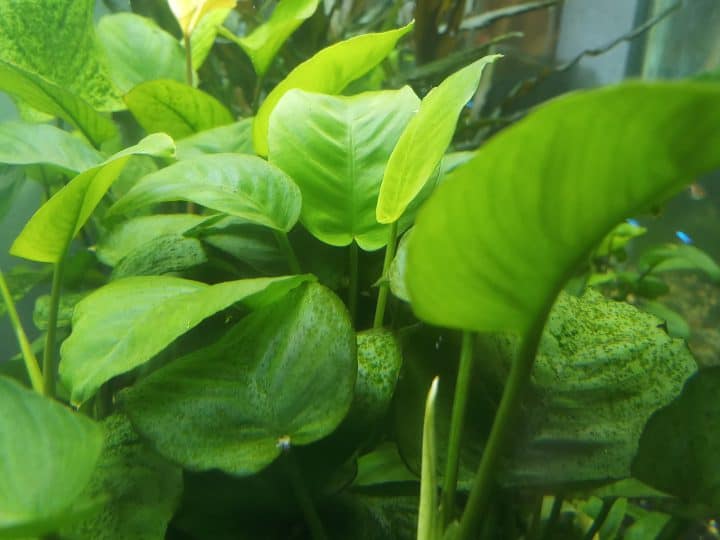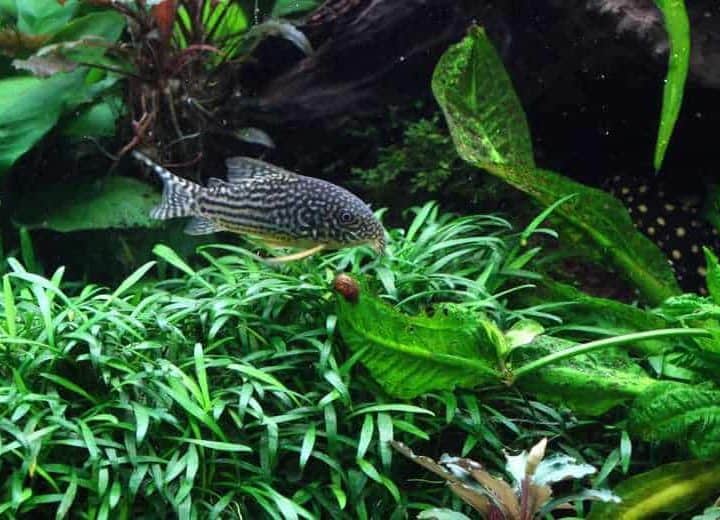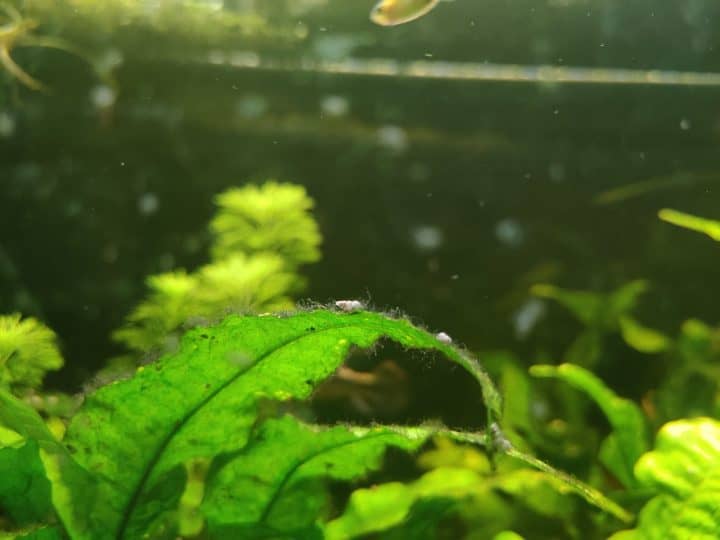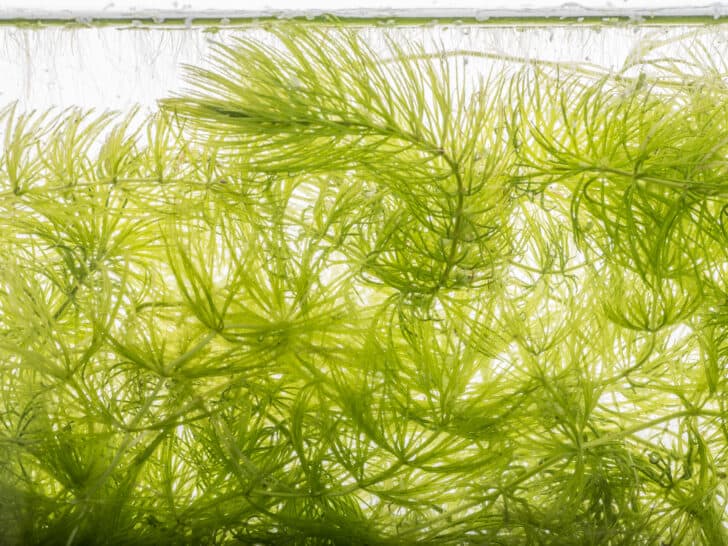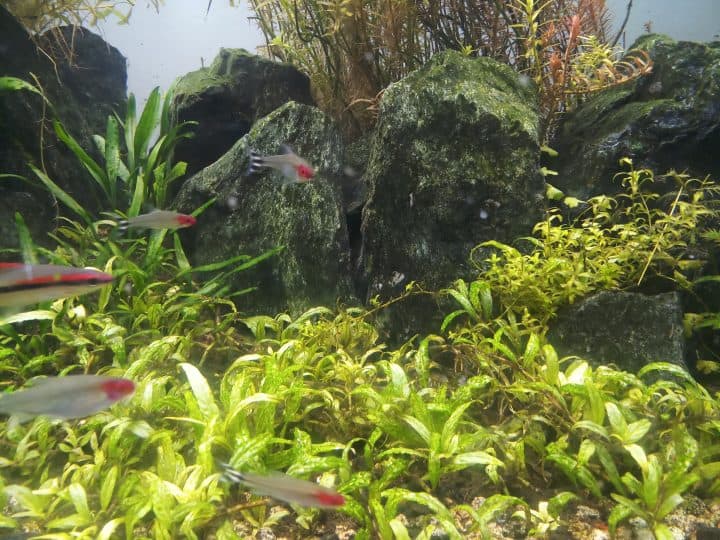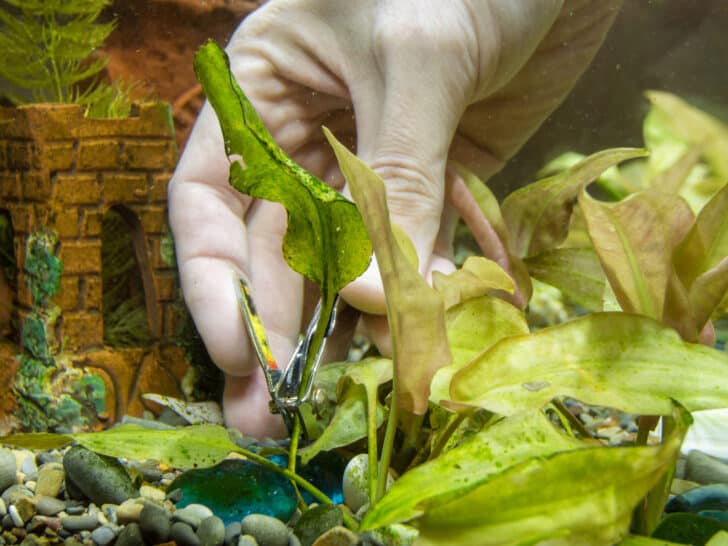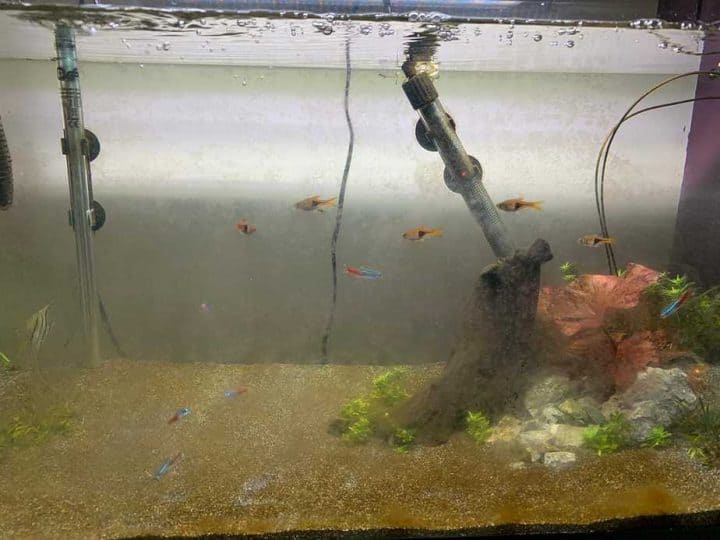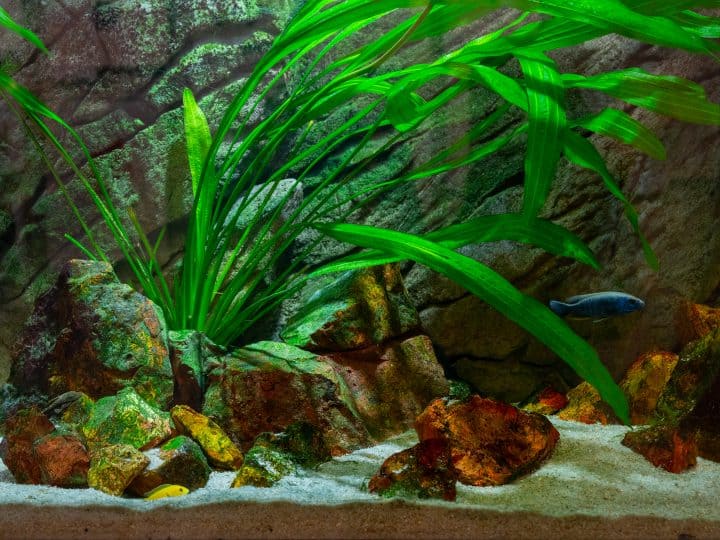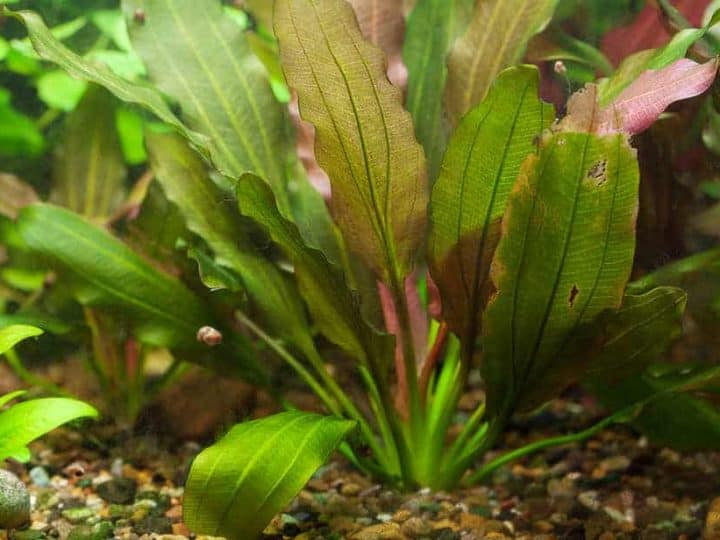Maintaining an aquarium can be a satisfying yet complex task. Between the water, fish, and plants making their living within your tank, an entire micro-ecosystem has sprung into existence. For these disparate elements to survive and coexist effectively, specific efforts must be made to serve their needs, especially if you notice your aquarium plants turning transparent.
Quick Answer
Aquarium plants turn transparent because of an imbalance or lack of nutrients from their planted soil. Insufficient light filtering into the tank or an imbalance in the CO2 or pH levels in the water can also cause this problem. Use liquid fertilizer solutions containing iron to save your plants.
Keep reading as I discuss the common causes for such plant transparency and then solutions for restoring the color and life to your aquarium plants. Let’s make your aquarium beautiful again!
Reasons Aquarium Plants Are Transparent (And How To Fix It)
According to Kings Of The Aquarium’s Adam Edwards, the most common reason aquarium plants turn transparent is deficiencies in specific nutrients the plants need, such as iron or calcium. Additional factors for plant discoloration include the plant type, the light fixture on the tank and its type, and the water environment’s pH, CO2, and temperature levels.
You can treat transparent aquarium plants by changing the makeup of fertilizer used in the aquarium’s substrate or soil and altering the light or water environment to different degrees. I will go into more specifics in the sections below on how to stop your aquarium plants from turning transparent.
However, it’s also possible that your aquarium plant’s transparency is caused by bacteria or fungus. In this case, according to Aqua Life Expert, the solution is severe but also simple: Cut off the affected part of the plant or remove it entirely to prevent the problem from spreading to the rest of the plants in your tank. Of course, this should be your last resort when all other solutions don’t work.
Nutrient Deficiencies
Just like the fish swimming through your tank, your aquarium plants also need to be fed. They are nourished through photosynthesis, which requires light, carbon dioxide, and specific nutrients such as nitrogen, potassium, and iron.
When a plant does not receive these nutrients from their environment, they begin to die. This decaying process causes the leaves to wilt and turn brown, yellow, or transparent.
Aquarium Co-Op has gathered info on the most common nutrient deficiencies, organized by the specific nutrient deficiency and the plant’s respective discolored appearance as a result.
How To Fix
Transparent leaves in your aquarium plants indicate a lack of chlorophyll, the source of a leaf’s greenery. According to the University of Illinois, an iron deficiency is likely to be the primary source of a lack of chlorophyll and this form of discoloration.
As a result, the leading solution for you as the aquarium owner is seeking out fertilizer for your tank with a higher amount of iron within it. You should start by shopping for comprehensive liquid fertilizer solutions containing iron.
Alternatively, you could keep the same fertilizer and begin an iron-specific treatment to pair with it for use on your aquarium’s soil.
After changing to an iron-enriched fertilizer or supplement, it should take about 2 to 3 weeks to determine how much your actions helped. Then, you can continue to examine your aquarium and experiment with other possible solutions to your transparent plant problem (like those below).
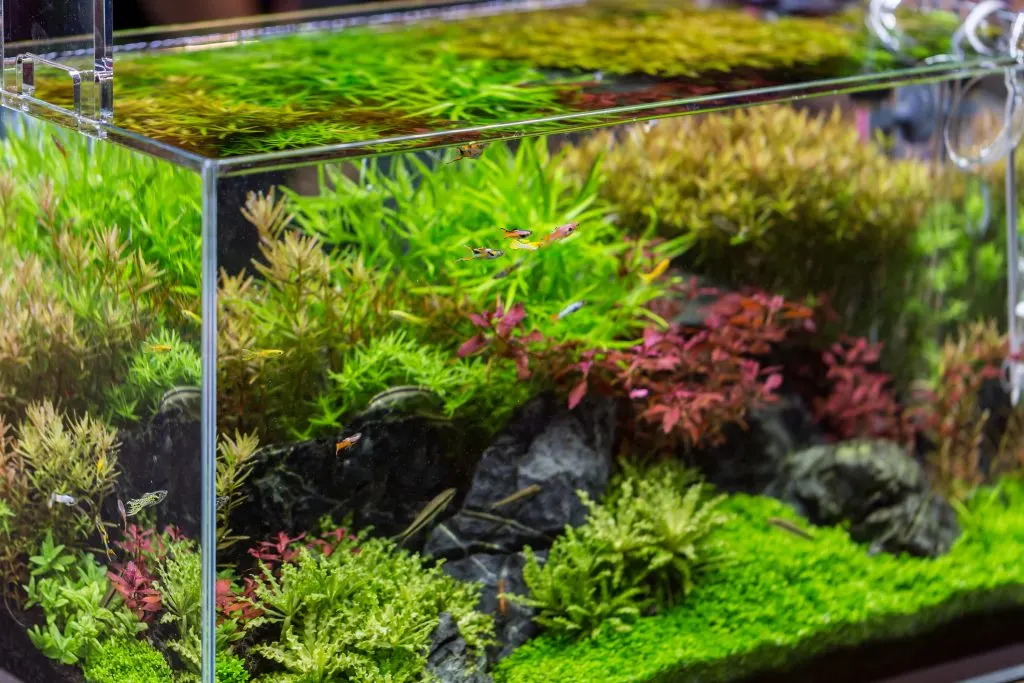
Lack of Light
A relatively simple yet meaningful factor to the health of your aquarium’s plants is the light on your tank — the type, its brightness, and its duration throughout the day matter in ensuring regular maintenance of aquarium plants.
A lack of proper light for plants, or with plants in a new environment used to a higher or lower brightness and duration to their lighting, can cause them to lose their healthy, green coloration over time.
How To Fix
For lighting solutions, experimentation will be required. The level of lighting needed for the plants in your tank will depend on the types of plants they are and the level of lighting you (or others) have been delivering to them thus far.
The goal is to specifically determine the necessary lighting for your tank’s plants and then change your bulbs and timers to match their needs. Proper research will be required.
Aquariadise provides a comprehensive aquarium lighting guide worth reading. Fortunately, adjusting the lighting system around your tank, similar to changing your liquid fertilizer process, is a relatively easy fix to make.
Imbalance of Carbon Dioxide and pH Levels
All plants absorb carbon dioxide on land or in water; sunlight and water are key components of photosynthesis. Another key aspect of undersea plants’ health comes in the specific pH level within their aquatic environment. The pH level is the spectrum of how acidic (0-7) or basic/alkaline (8-14) a liquid is.
For your aquarium and the life within it, capturing the right carbon dioxide (CO2) and pH levels is essential in maintaining your plants’ and fish’s health. Your plants could be turning transparent due to an imbalance in their carbon dioxide or pH environment.
How To Fix
For proper CO2 levels, first and foremost, you must ensure your tank has a well-functioning filter and air pump. The airflow of your aquarium should be adequate to prevent the growth of any bacteria. In some cases, using a CO2 injector could become necessary to manually boost the carbon levels in the water to help your plants grow.
For proper pH levels, research and knowledge of your plant and fish life (such as freshwater vs. saltwater) must be taken into account to find the right balance. However, in general, aquatic plants dislike alkaline water (pH of 8-14), and thus extremes near that pH could be causing your plants to turn transparent and eventually die.
For all tanks, you’ll want your pH measurements to be lower than around 9 and more neutrally positioned on the pH scale. Kings Of The Aquarium lays out a general guide of aquarium pH levels between 5-8, depending on the water environment and the fish you have.
An important note: For adjusting either your tank’s carbon or pH levels, you’ll need to perform research into your tank’s specific water type and the respective fish and plant life, and what their individual preferences are.
Changing these aspects of your aquarium is more challenging for you. Taking improper changes to the water can potentially be more dangerous for the life inside your specific ecosystem.
Please consider this before making any drastic changes to your aquarium! It is imperative to find the right balance for the optimal health of both the fish and the plants within your tank.
Final Thoughts
Owning and caring for an aquarium can be a highly rewarding endeavor. However, as with the care of any plant or animal, keeping the life within your tank alive and well can become challenging when problems arise.
Nutrients, light, and the science of the water environment are the main contributors to how well your aquarium plants will thrive.
For your plants to turn transparent or clear, first, you should determine what’s causing the problem and how to solve it. Then, evaluate the results while observing the fertilizer, lighting, carbon dioxide, and pH changes you make within your little ecosystem.

